WHAT IS TOPICAL STEROID WITHDRAWAL?
Yes, this is a subject which is close to my heart. I know Topical Steroid Withdrawal intimately because I endured this process since October 2014.
What is Topical Steroid Withdrawal? Topical Steroid Withdrawal or TSW for short is also known as Red Skin Syndrome (RSS).
It is the process that happens after the body has become addicted to topical steroids, or corticosteroids, and the person ceases to use them. The body goes into the withdrawal process in as little as two days after topical steroids have been stopped.
HOW DOES THIS HAPPEN?
You may be wondering how this comes about. The process is eerily similar for most people and it starts in the doctor’s office.
When someone presents eczema to their doctor, the first mode of action normally recommended is a course of topical steroids. Sometimes the doctor will advise that this medication should only be used temporarily, although most doctors will still recommend using topical steroids indefinitely.
Me, I was told to use topical steroids by many different doctors over the course of 30+ years, sometimes with a disclaimer, but most of the time with their full encouragement.
It can take as little as two weeks for addiction to occur and skin atrophy to begin.
WHAT DOES TOPICAL STEROID ADDICTION LOOK LIKE?
Initially, the topical steroids work well, but then after a time, the symptoms will show a gradual spreading and worsening, requiring an increasing amount of topical steroids to compensate.
Eventually the person’s eczema coverage and severity has increased far past the original condition.
A sudden and intense worsening of the eczema, or ‘flare’, can occur when topical steroids haven’t been applied to the skin for a day or two. This is a fairly good indicator that the skin has become dependent on topical steroids.
Sometimes the steroid creams may stop working altogether, which is when doctors may prescribe a very strong oral steroid.
WHAT ARE SOME OF THE OTHER POTENTIAL SIDE EFFECTS OF USING TOPICAL STEROIDS?
![]() Lymphoma (cancer).
Lymphoma (cancer).
![]()
![]()
![]()
![]()
![]()
![]()
![]()
![]()
![]()
![]()
![]()
![]()
![]()
![]()
![]()
![]()
![]()
![]()
![]()
![]()
![]()
![]()
![]()
![]()
![]()
![]()
![]()
![]()
![]()
![]()
![]()
![]()
![]()
![]()
![]()
![]()
![]()
![]()
![]()
![]()
![]()
![]()
![]()
![]()
![]()
![]()
![]()
![]()
![]()
![]()
![]()
![]()
![]()
![]()
![]()
![]()
![]()
![]()
![]()
![]()
![]()
![]()
![]()
![]()
![]()
![]()
![]()
![]()
![]()
![]()
![]()
![]()
![]()
![]()
![]()
![]()
![]()
![]()
![]()
![]()
![]()
![]()
![]()
![]()
![]()
![]()
![]()
![]()
![]()
![]()
![]()
![]()
![]()
![]()
![]()
![]()
![]()
![]()
![]()
![]()
![]()
![]()
![]()
![]()
![]()
![]()
![]()
![]()
![]()
![]()
![]()
![]()
![]()
![]()
![]()
![]()
![]()
![]()
![]()
![]()
![]()
![]()
![]()
![]()
![]()
![]()
![]()
![]()
![]()
![]()
![]()
![]()
![]()
![]()
![]()
![]()
![]()
![]()
![]()
![]()
![]()
![]()
![]()
![]()
![]()
![]()
![]()
![]()
![]()
![]()
![]()
![]()
![]()
![]()
![]()
![]()
![]()
![]()
![]()
![]()
![]()
![]()
![]()
![]()
![]()
![]()
![]()
![]()
![]()
![]()
![]()
![]()
![]()
![]()
![]()
![]()
![]()
![]()
![]()
![]()
![]()
![]()
![]()
![]()
![]()
![]()
![]()
![]()
![]()
![]()
![]()
![]()
![]()
![]()
![]()
![]()
![]()
![]()
![]()
![]()
![]()
![]()
![]()
![]()
![]()
![]()
![]()
![]()
![]()
![]()
![]()
![]()
![]()
![]()
![]()
![]()
![]()
![]()
![]()
![]()
![]()
![]()
![]()
![]()
![]()
![]()
![]()
![]()
![]()
![]()
![]()
![]()
![]()
![]()
![]()
![]()
![]()
![]()
![]()
![]()
![]()
![]()
![]()
![]()
![]()
![]()
![]()
![]()
![]()
![]()
![]()
![]()
![]()
![]()
![]()
![]()
![]()
![]()
![]()
![]()
![]()
![]()
![]()
![]()
![]()
![]()
![]()
![]()
![]()
![]()
![]()
![]()
![]()
![]()
![]()
![]()
![]()
![]()
![]()
![]()
![]()
![]()
![]()
![]()
![]()
![]()
![]()
![]()
![]()
![]()
![]()
![]()
![]()
![]()
![]()
![]()
![]()
![]()
![]()
![]()
![]()
![]()
![]()
![]()
![]()
![]()
![]()
![]()
![]()
![]()
![]()
![]()
![]()
![]()
![]()
![]()
![]()
![]()
![]()
![]()
![]()
![]()
![]()
![]()
![]()
![]()
![]()
![]()
![]()
![]()
![]()
![]()
![]()
![]()
![]()
![]()
![]()
![]()
![]()
![]()
![]()
![]()
![]()
![]()
![]()
![]()
![]()
![]()
![]()
![]()
![]()
![]()
![]()
![]()
![]()
![]()
![]()
![]()
![]()
![]()
![]()
![]()
![]()
![]()
![]()
![]()
![]()
![]()
![]()
![]()
![]()
![]()
![]()
![]()
![]()
![]()
![]()
![]()
![]()
![]()
![]()
![]()
![]()
![]()
![]()
![]()
![]()
![]()
![]()
![]()
![]()
![]()
![]()
![]()
![]()
![]()
![]()
![]()
![]()
![]()
![]()
![]()
![]()
![]()
![]()
![]()
![]()
![]()
![]()
![]()
![]()
![]()
![]()
![]()
![]()
![]()
![]()
![]()
![]()
![]()
![]()
![]()
![]()
![]()
![]()
![]()
![]()
![]()
![]()
![]()
![]()
![]()
![]()
![]()
![]()
![]()
![]()
![]()
![]()
![]()
![]()
![]()
![]()
![]()
![]()
![]()
![]()
![]()
![]()
![]()
![]()
![]()
![]()
![]()
![]()
![]()
![]()
![]()
![]()
![]()
![]()
![]()
![]()
![]()
![]()
![]()
![]()
![]()
![]()
![]()
![]()
![]()
![]()
![]()
![]()
![]()
![]()
![]()
![]()
![]()
![]()
![]()
![]()
![]()
![]()
![]()
![]()
![]()
![]()
![]()
![]()
![]()
![]()
![]()
![]()
![]()
![]()
![]()
![]()
![]()
![]()
![]()
![]()
![]()
![]()
![]()
![]()
![]()
![]()
![]()
![]()
![]()
![]()
![]()
![]()
![]()
![]()
![]()
![]()
![]()
![]()
![]()
![]()
![]()
![]()
![]()
![]()
![]()
![]()
![]()
![]()
![]()
![]()
![]()
![]()
![]()
![]()
![]()
![]()
![]()
![]()
![]()
![]()
![]()
![]()
![]()
![]()
![]()
![]()
![]()
![]()
![]()
![]()
![]()
![]()
![]()
![]()
![]()
![]()
![]()
![]()
![]()
![]()
![]()
![]()
![]()
![]()
![]()
![]()
![]()
![]()
![]()
![]()
![]()
![]()
![]()
![]()
![]()
![]()
![]()
![]()
![]()
![]()
![]()
![]()
![]()
![]()
![]()
![]()
![]()
![]()
![]()
![]()
![]()
![]()
![]()
![]()
![]()
![]()
![]()
![]()
![]()
![]()
![]()
![]()
![]()
![]()
![]()
![]()
![]()
![]()
![]()
![]()
![]()
![]()
![]()
![]()
![]()
![]()
![]()
![]()
![]()
![]()
![]()
![]()
![]()
![]()
![]()
![]()
![]()
![]()
![]()
![]()
![]()
![]()
![]()
![]()
![]()
![]()
![]()
![]()
![]()
![]()
![]()
![]()
![]()
![]()
![]()
![]()
![]()
![]()
![]()
![]()
![]()
![]()
![]()
![]()
![]()
![]()
![]()
![]()
![]()
![]()
![]()
![]()
![]()
![]()
![]()
![]()
![]()
![]()
![]()
![]()
![]()
![]()
![]()
![]()
![]()
![]()
![]()
SO, YOUR BODY IS DEPENDENT ON TOPICAL STEROIDS, WHAT NOW?
To put it simply, the answer is to stop using topical steroids. Just stop. This is actually the easy part because what follows can be an ordeal like no other.
Ranging from mild to severe, Topical Steroid Withdrawal symptoms commonly include the following:
![]()
![]()
![]()
![]()
![]()
![]()
![]()
![]()
![]()
![]()
![]()
![]()
![]()
![]()
![]()
![]()
![]()
![]()
![]()
![]()
![]()
![]()
![]()
![]()
![]()
![]()
![]()
![]()
![]()
![]()
![]()
![]()
![]()
![]()
![]()
![]()
![]()
![]()
![]()
![]()
![]()
![]()
![]()
![]()
![]()
![]()
![]()
![]()
![]()
![]()
![]()
![]()
![]()
![]()
![]()
![]()
![]()
![]()
![]()
![]()
![]()
![]()
![]()
![]()
![]()
![]()
![]()
![]()
![]()
![]()
![]()
![]()
![]()
![]()
![]()
![]()
![]()
![]()
![]()
![]()
![]()
![]()
![]()
![]()
![]()
![]()
![]()
![]()
![]()
![]()
![]()
![]()
![]()
![]()
![]()
![]()
![]()
![]()
![]()
![]()
![]()
![]()
![]()
![]()
![]()
![]()
![]()
![]()
![]()
![]()
![]()
![]()
![]()
![]()
![]()
![]()
![]()
![]()
![]()
![]()
![]()
![]()
![]()
![]()
![]()
![]()
![]()
![]()
![]()
![]()
![]()
![]()
![]()
![]()
![]()
![]()
![]()
![]()
![]()
![]()
![]()
![]()
![]()
![]()
![]()
![]()
![]()
![]()
![]()
![]()
![]()
![]()
![]()
![]()
![]()
![]()
![]()
![]()
![]()
![]()
![]()
![]()
![]()
![]()
![]()
![]()
![]()
![]()
![]()
![]()
![]()
![]()
![]()
![]()
![]()
![]()
![]()
![]()
![]()
![]()
![]()
![]()
![]()
![]()
![]()
![]()
![]()
![]()
![]()
![]()
![]()
![]()
![]()
![]()
![]()
![]()
![]()
![]()
![]()
![]()
![]()
![]()
![]()
![]()
![]()
![]()
![]()
![]()
![]()
![]()
![]()
![]()
![]()
![]()
![]()
![]()
![]()
![]()
![]()
![]()
![]()
![]()
![]()
![]()
![]()
![]()
![]()
![]()
![]()
![]()
![]()
![]()
![]()
![]()
![]()
![]()
![]()
![]()
![]()
![]()
![]()
![]()
![]()
![]()
![]()
![]()
![]()
![]()
![]()
![]()
![]()
![]()
![]()
![]()
![]()
![]()
![]()
![]()
![]()
![]()
![]()
![]()
![]()
![]()
![]()
![]()
![]()
![]()
![]()
![]()
![]()
![]()
![]()
![]()
![]()
![]()
![]()
![]()
![]()
![]()
![]()
![]()
![]()
![]()
![]()
![]()
![]()
![]()
![]()
![]()
![]()
![]()
![]()
![]()
![]()
![]()
![]()
![]()
![]()
![]()
![]()
![]()
![]()
![]()
![]()
![]()
![]()
![]()
![]()
![]()
![]()
![]()
![]()
![]()
![]()
![]()
![]()
![]()
![]()
![]()
![]()
![]()
![]()
![]()
![]()
![]()
![]()
![]()
![]()
![]()
![]()
![]()
![]()
![]()
![]()
![]()
![]()
![]()
![]()
![]()
![]()
![]()
![]()
![]()
![]()
![]()
![]()
![]()
![]()
![]()
![]()
![]()
![]()
![]()
![]()
![]()
![]()
![]()
![]()
![]()
![]()
![]()
![]()
![]()
![]()
![]()
![]()
![]()
![]()
![]()
![]()
![]()
![]()
![]()
![]()
![]()
![]()
![]()
![]()
![]()
![]()
![]()
![]()
![]()
![]()
![]()
![]()
![]()
![]()
![]()
![]()
![]()
![]()
![]()
![]()
![]()
![]()
![]()
![]()
![]()
![]()
![]()
![]()
![]()
![]()
![]()
![]()
![]()
![]()
![]()
![]()
![]()
![]()
![]()
![]()
![]()
![]()
![]()
![]()
![]()
![]()
![]()
![]()
![]()
![]()
![]()
![]()
![]()
![]()
![]()
![]()
![]()
![]()
![]()
![]()
![]()
![]()
![]()
![]()
![]()
![]()
![]()
![]()
![]()
![]()
![]()
![]()
![]()
![]()
![]()
![]()
![]()
![]()
![]()
![]()
![]()
![]()
![]()
![]()
![]()
![]()
![]()
![]()
![]()
![]()
![]()
![]()
![]()
![]()
![]()
![]()
![]()
![]()
![]()
![]()
![]()
![]()
![]()
![]()
![]()
![]()
![]()
![]()
![]()
![]()
![]()
![]()
![]()
![]()
![]()
![]()
![]()
![]()
![]()
![]()
![]()
![]()
![]()
![]()
![]()
![]()
![]()
![]()
![]()
![]()
![]()
![]()
![]()
![]()
![]()
![]()
![]()
![]()
![]()
![]()
![]()
![]()
![]()
![]()
![]()
![]()
![]()
![]()
![]()
![]()
![]()
![]()
![]()
![]()
![]()
![]()
![]()
![]()
![]()
![]()
![]()
![]()
![]()
![]()
![]()
![]()
![]()
![]()
![]()
![]()
![]()
![]()
![]()
![]()
![]()
![]()
![]()
![]()
![]()
![]()
![]()
![]()
![]()
![]()
![]()
![]()
![]()
![]()
![]()
![]()
![]()
![]()
![]()
![]()
![]()
![]()
![]()
![]()
![]()
![]()
![]()
![]()
![]()
![]()
![]()
![]()
![]()
![]()
![]()
![]()
![]()
![]()
![]()
![]()
![]()
![]()
![]()
![]()
![]()
![]()
![]()
![]()
![]()
![]()
![]()
![]()
![]()
![]()
![]()
![]()
![]()
![]()
![]()
![]()
![]()
![]()
![]()
![]()
![]()
![]()
![]()
![]()
![]()
![]()
![]()
![]()
![]()
![]()
![]()
![]()
![]()
![]()
![]()
![]()
![]()
![]()
![]()
![]()
![]()
![]()
![]()
![]()
![]()
![]()
![]()
![]()
![]()
![]()
![]()
![]()
![]()
![]()
![]()
![]()
![]()
![]()
![]()
![]()
![]()
![]()
![]()
![]()
![]()
![]()
![]()
![]()
![]()
![]()
![]()
![]()
![]()
![]()
![]()
![]()
![]()
![]()
![]()
![]()
![]()
![]()
![]()
![]()
![]()
![]()
![]()
![]()
![]()
![]()
![]()
![]()
![]()
![]()
![]()
![]()
![]()
![]()
![]()
![]()
![]()
![]()
![]()
![]()
![]()
![]()
![]()
![]()
![]()
![]()
![]()
![]()
![]()
![]()
![]()
![]()
![]()
![]()
![]()
![]()
![]()
![]()
![]()
![]()
![]()
![]()
![]()
![]()
![]()
![]()
![]()
![]()
![]()
![]()
![]()
![]()
![]()
![]()
![]()
![]()
![]()
![]()
![]()
![]()
![]()
![]()
![]()
![]()
![]()
![]()
![]()
![]()
![]()
![]()
![]()
![]()
![]()
![]()
![]()
![]()
![]()
![]()
![]()
![]()
![]()
![]()
![]()
![]()
![]()
![]()
![]()
![]()
![]()
![]()
![]()
![]()
![]()
![]()
![]()
![]()
![]()
![]()
![]()
![]()
![]()
![]()
![]()
![]()
![]()
![]()
![]()
![]()
![]()
![]()
![]()
![]()
![]()
![]()
![]()
![]()
![]()
![]()
![]()
![]()
![]()
![]()
![]()
![]()
![]()
![]()
![]()
![]()
![]()
![]()
![]()
![]()
![]()
![]()
![]()
![]()
![]()
![]()
![]()
![]()
![]()
![]()
![]()
![]()
![]()
![]()
![]()
![]()
![]()
![]()
![]()
![]()
![]()
![]()
![]()
![]()
![]()
![]()
![]()
![]()
![]()
![]()
![]()
HOW LONG CAN I EXPECT TO GO THROUGH THIS?
The similarities of symptoms are comparable for most people going through topical steroid withdrawal. The entire process can take anywhere from months up to several years to overcome.
Often the recovery period for topical steroid withdrawal will vary dramatically between individuals. Unfortunately there is no set guide for expected healing times, however an estimate has been provided by Dr Rapaport; a doctor accomplished in the world of topical steroid addiction.
The recovery time is said to be relative to the strength of the steroids and the duration used; with an estimated healing time of between 10-30% of that entire period. For example, if an individual used topical steroids daily for 30 years, their recovery time is estimated at between 3-9 years. That said; I haven’t yet heard of anyone taking longer than 5 years.
As scary as this sounds, don’t let it turn you away just yet.
The worst symptoms are generally only experienced for a portion of this time; beginning in as little as a few days after stopping the topical steroids up until approximately 3-6 months. After this, the body will begin its slow and unsteady ascent towards a healed state. Occasionally however, cases have been observed much longer than this.
TECHNICAL ITEMS
Iatrogenic: TSW/RSS is an iatrogenic condition, meaning it is caused by medication.
Nitric oxide: Topical steroids constrict blood vessels to reduce redness and inflammation and when cessation occurs, endothelial nitric oxide (NO) stores are released. This causes a ‘hyperdilation’ (widening) of these vessels, resulting in red and eczematous skin. It is not genuine eczema/atopic dermatitis. The levels of nitric oxide are found to be much higher in people going through TSW.
Cortisol: Topical steroids (also known as corticosteroids) act as a synthetic hormone which mimics cortisol, disrupting the endocrine system and the body’s cortisol production.
The role of Cortisol is to influence the body’s sugars, fat metabolism, salt and water balance, circadian rhythm, immune system, inflammation, memory formation and the health of the skin.
Without the introduction of this synthetic hormone and the body now not producing its own, you are now cortisol depleted. The body needs to learn to produce its own cortisol again and readjust to the massive change.
Insomnia occurs due to the chronic pain or itch symptoms; or also because of the circadian rhythm disruption caused by cortisol adrenal issues. The adrenal glands affect cortisol peak times which are responsible for our circadian rhythm and keeping us awake.
The ooze which is experienced during TSW is a serum called serous exudate which leaks from the body. It is rich in protein and cellular components and is usually present in cases of inflammation. It is generally not a sign of infection.
Why does the skin shed? The simple answer is because the brain recognises abnormal skin; it will thus speed up the cell renewal process to dispose of it. Much like sunburn and the peeling which ensues, TSW skin shedding is a positive sign that the body is working towards a healing state.
IS TOPICAL STEROID WITHDRAWAL WORTH IT?
So far I have only outlined the nasty side of this process. Although you may be taken aback by the images and side effects, the final result is a life free of using these harmful drugs.
With a much healthier future at hand, clear skin and clean body unplagued by the requirement for steroids, this for me and many others, has been the most rewarding thing we have ever done.
Please note: The information presented throughout this site is provided to those suffering from eczema and Topical Steroid Withdrawal, it is NOT intended to be medical advice. The content has been either trialed, tested or researched by the authors/s, but is not and should not be relied upon as medical advice. Any medical questions or concerns should be addressed with a healthcare professional. Never avoid or delay seeking medical advice or disregard medical advice based upon information provided on this website.The publisher of this site is not responsible for any errors or omissions in any content herein.
Recent Posts
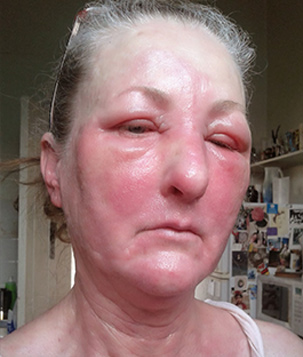

Painful fluid related swelling of the face, hands and feet. Visit blog.
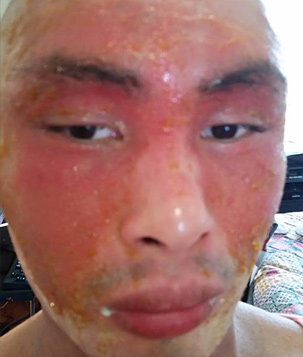

Oozing can be extremely uncomfortable and at times, hard to handle.
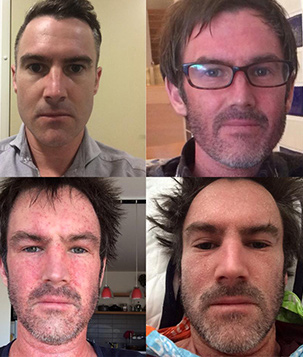

Showing 'during' and 'after', proving that healing happens.Visit blog.
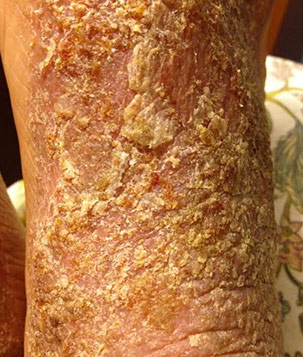

Showing the often chronic nature of TSW. Visit Blog.
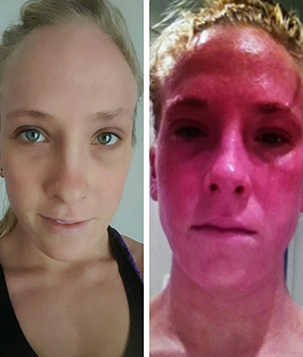

Extremely red skin which is very common during TSW. The photo on the left is almost two years into TSW.






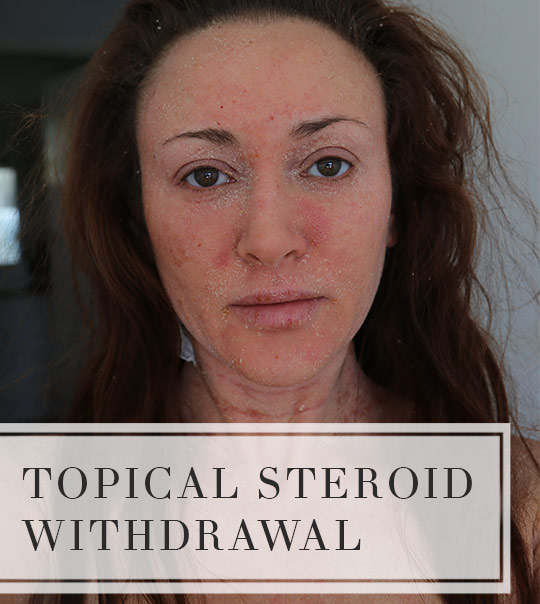





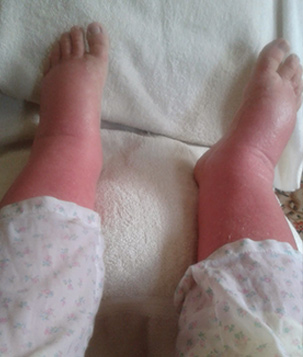
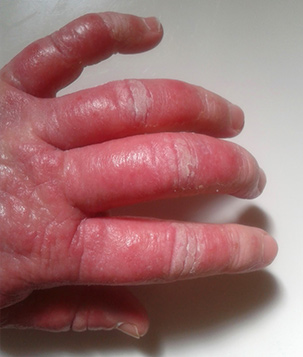
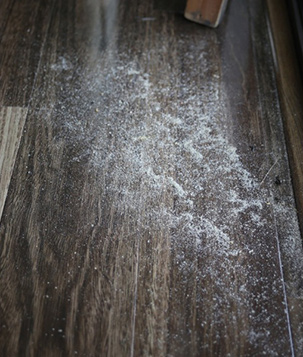
very helpful
Hi, just started reading your information and finding it encouraging….. Thank you. I went thru a severe 9 month withdrawal and was feeling and looking extremely healthy for a good 6 months. During that time only had a little outbreak on my arms. Then we went on a trip I I went back to eating gluten and dairy and red wine. I went down hill rather quickly in weeks following our return. 18 months later I’m still recovering. But this time I can’t seem to eat all the beneficial greens I consumed the first time. Is this a scene rio you are familiar with? Going thru it twice and this time seeing no real end in sight is discouraging. I am 62 and had steroid/prednisone use for most my life up to 60 years.